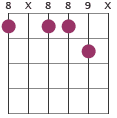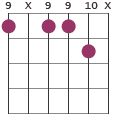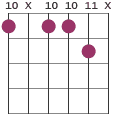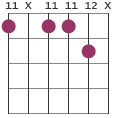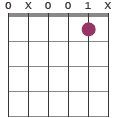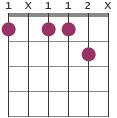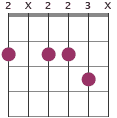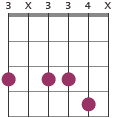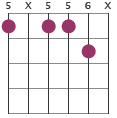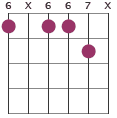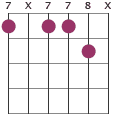m7#5 (m7+5) chords
The Minor 7th sharp 5th chord is an alternation of the minor seventh chord. This chord is identical to a minor seventh except that the fifth is raised one step. By comparing Cm7 with Cm7#5 we can see that the notes change from C, Eb, G, Bb to C, Eb, G#, Bb. This chord category should not be confused with the 7#5.
The m7#5 is a quite rare chord and often involve difficult fingerings. The smart way is to only learn one movable shape, which are presented below, with the root on the 6th string.
Minor 7th sharp 5th
Cm7#5
Dbm7#5
Dm7#5
Ebm7#5
Em7#5
Fm7#5
Gbm7#5
Gm7#5
Abm7#5
Am7#5
Bbm7#5
Bm7#5
Comments
Em7#5 can also be played as 0X0010 or 030010.
Chord formula
The minor seventh sharp fifth is built with the formula 1-b3-#5-b7. This includes the root (1), the minor third (b3), a raised fifth (#5) and the flat minor seventh (b7).
Open position
One example of this chord in open position is the G#m7#5:
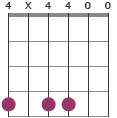
Example of chord progression:
G#m7#5 - F#m11 (2X2200) - Emaj7
Movable shape with root on fifth string
This is how the minor seventh sharp fifth can be played with root on the 5th string:
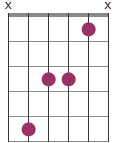
For example, Dm7#5 is played as X5331X with this shape.
Movable shape with root on fourth string
This is how the minor seventh sharp fifth can be played with root on the 4th string:
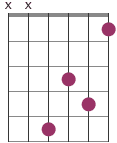
For example, Gm7#5 is played as XX5341 with this shape.
Chord progressions
Progressions including this chord type:
Cmaj7 - Bm7#5 - Ebmaj7
Cm13 - Cm7#5 - F7#9 - F9
Minor seventh sharp fifth is often used as in between chord in blues and jazz progressions.
Alternate chord names
The minor seventh sharp fifth can be written in different ways. Sometimes it is instead written as m7(b13). Notice also that this chord type is equivalent with an added 9th triad in first inversion (Cadd9/E = Em7#5) in similar way that the major triad is enharmonic to m#5 (C/E = Em#5).
